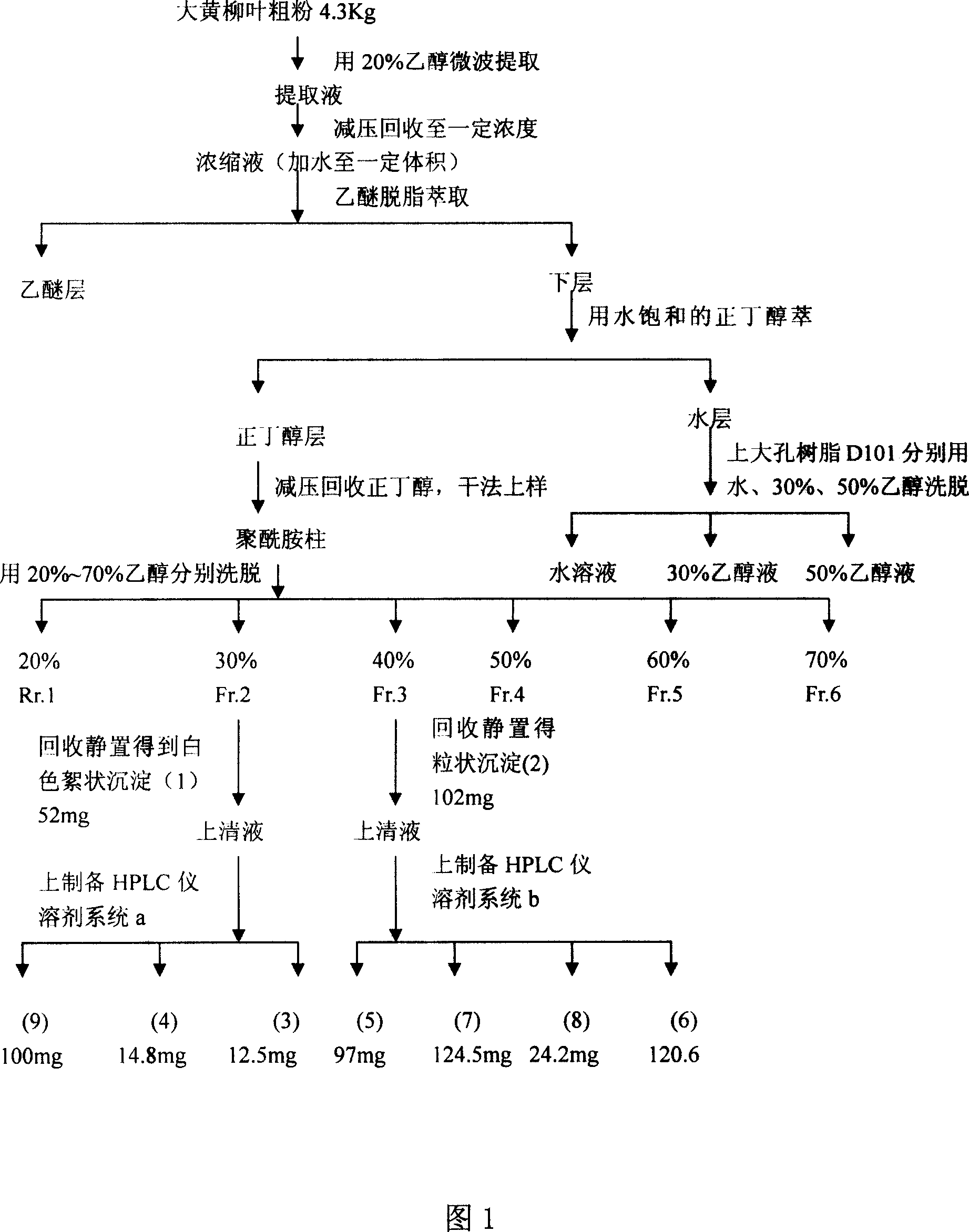Extraction and separation method for rhubarb willow leaf flavone component
A technology of willow leaf flavonoids and a separation method, which is applied in the field of extraction and separation of flavonoid components from rhubarb willow leaves, can solve the problems of small separation amount and low separation efficiency, and achieves the effects of good method reproducibility and strong operability
- Summary
- Abstract
- Description
- Claims
- Application Information
AI Technical Summary
Problems solved by technology
Method used
Image
Examples
Embodiment Construction
[0023] The present invention will be further described below in conjunction with embodiment, and embodiment will help understand the present invention better, but the present invention is not limited only to following embodiment.
[0024] The extraction and separation process is shown in flow chart 1:
[0025] 1. Sample Extraction
[0026]Dried rhubarb willow leaves (collected in Linjiang area in July) 4.8Kg, crushed into coarse powder (80 mesh sieve), soaked in 20% ethanol for 2 hours, and then extracted by microwave, the extraction temperature is medium-high heat, 8 minutes each time , extracted 3 times in total, combined the extracts after filtration, concentrated under reduced pressure to 1.68g of concentrated extract, and the yield was 35%. After dissolving with 3 times the amount of water, extract 3 times with an equal volume of diethyl ether, combine the water layers (divided into two layers, take the lower layer), discard the diethyl ether layer; 3:4 (v / v)) water-sat...
PUM
 Login to View More
Login to View More Abstract
Description
Claims
Application Information
 Login to View More
Login to View More - R&D
- Intellectual Property
- Life Sciences
- Materials
- Tech Scout
- Unparalleled Data Quality
- Higher Quality Content
- 60% Fewer Hallucinations
Browse by: Latest US Patents, China's latest patents, Technical Efficacy Thesaurus, Application Domain, Technology Topic, Popular Technical Reports.
© 2025 PatSnap. All rights reserved.Legal|Privacy policy|Modern Slavery Act Transparency Statement|Sitemap|About US| Contact US: help@patsnap.com

